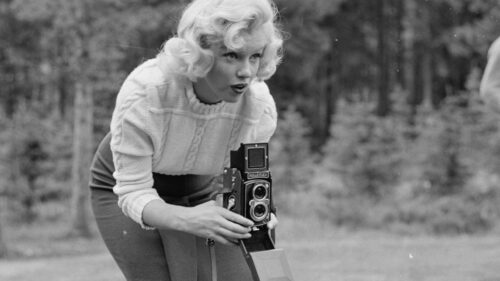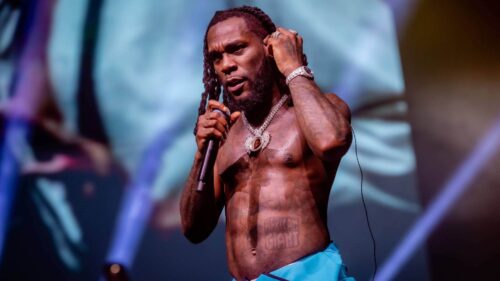How does an artist obtain cultural power during his lifetime? Why do some artists rise to stardom with cookie-cutter products, while others labor over avant-garde works but remain unknown throughout their careers?
These questions followed me since I began researching for my book Poder Suave — Soft Power, launched in Brazil in 2017. That following year, my book was a finalist in the Jabuti Awards, the most important literary award in Latin America under the creative economy category, which recognizes artistic contributions to economic growth. I focused my research on cultural soft power — power that is seductive and that draws in viewers worldwide. Some examples include Hollywood and Bollywood movies, French fashion, Russian ballet, the British Invasion of the 1960s (bands like the Beatles) and Brazilian bossa nova, Carnaval and telenovelas.
A general conclusion from my research shows that what society deems as desirable, such as believing one actor is persuasive or buying into certain fashion choices, is built upon accepted trends. With corporate and governmental support, these manifestations of “soft power” can reach new heights — like how Russia used ballet as a diplomatic tool during the Soviet era. Cultural influence is not limited to wealthy countries. Indian film and Brazilian music, for example, both reach wide international audiences.

Via the author.
However, the importance of trends, while real, did not satisfy my curiosity. I pondered over why some underprivileged creatives emerge onto the global stage, whereas other artists never reach their potential, despite having numerous advantages. What is the secret behind their success or failure?
I investigated this unsolved mystery in my doctoral thesis on socio-cultural progress with the help of the Capes Foundation Scholarship (Brazilian Federal Agency for Support and Evaluation of Graduate Education). After five years of research, my thesis and newest book Poder Cultural finally provides the answers.
First, cultural power is the ability to universally influence people into thinking a movie, work of art or related product is good. Cultural power can move other countries’ economies, shape consumer habits and create new industries. Taylor Swift’s Eras Tour, for instance, contributed $4.3 billion to the US GDP, according to Bloomberg Economics. The tour largely boosted the hospitality industry, including hotels, local businesses and tourism revenues.
Even writers go through an audiovisual medium, such as movies, TV shows, telenovelas or social media, to make their books relevant. Keila Shaheen was an unknown writer until her video went viral on TikTok and promoted Shadow Work Journal to a bestseller.
Relevant politics in cultural power
Research has proven that artists with culturally relevant attitudes and products are more likely to become powerful. Emerald Fennel had never won an award as an actress, writer or director until her movie Promising Young Woman won the 2020 Academy Award for Best Original Screenplay. Its violence, not unlike films such as First Blood, spoke to young media consumers who are sensitive to themes of female oppression and Eurocentrism.
Another example is Bollywood star Shah Rukh Khan, who is better known in India than Brad Pitt. How is that possible? Khan is an undoubtedly attractive man. This fact alone gets him attention in the movie industry. In the beginning, Khan, like Pitt, used his good looks to obtain roles, even cheap flicks that would only be watched once. After ascending to stardom, Khan was able to reinvent his image by selecting roles with more cultural relevance. Take Khan’s performance as the alcoholic in Devdas (2002), which brought awareness to the struggles of addiction.
Both Khan and Pitt support international causes that positively shape their images: Pitt is involved with One Campaign, which fights against AIDS and poverty in poor countries; Khan is the ambassador of Pulse Polio, the National AIDS Control Organization and the Make-a-Wish Foundation in India. However, Khan has one notable advantage over his competitor. He has a greater command over social media, which he uses to mobilize his appeal to millions. Khan posts about his children and his long marriage to Gauri Chibber. His 42 million followers on Facebook, 30 million on Instagram and 42 million on Twitter eat up his family narrative. Days after his interview with David Letterman on My Next Guest Needs No Introduction, the television host named him “the greatest star of the world.”
Major components of disproportionate recognition
Both stars and politicians use social media to increase their power. In the music world, video clips are the most important audiovisual tool for singers to achieve cultural strength. Musicians Dua Lipa and Anitta must know this well. Their power extrapolates to music. In 2020, Dua Lipa posted a video for her 46 million followers on Instagram, criticizing the way the Israeli Defense Forces treat Palestinians. Israeli NGO Im Tirtzu opened a petition demanding that Dua Lipa’s songs be banned from the Israeli army radio, the most popular in the country, although her request was not granted. Likewise, Brazilian, far-right, former president Jair Bolsonaro criticized Anitta on his social media for supporting the legalization of marijuana. Bolsonaro also used this platform to denounce former candidate and then-elected president Lula in the 2022 election over her views on the use of the Brazilian flag.
Dua Lipa and Anitta’s content share similarities regarding aesthetics, techniques and lyrics. However, what makes Dua Lipa more effective, despite Anitta launching twice as many videos, is another crucial aspect for cultural power: language. Dua Lipa has always sung in the most popular language in the world, English, which helped close publicity contracts for the singer. She also developed her career in one of the world’s fashion capitals, London. Located outside any “English centers,” Anitta invested in more English videos, like “Girl from Rio,” “Downtown,” “Faking Love,” and “Boys Don’t Cry” to be more widely noticed.
Are these aspects to obtain cultural power fair? Definitely not. Because of these constraints, many culturally significant artists are ignored. Helena Solberg, for instance, was the only female director from Cinema Novo, the Brazilian New Cinema movement from the 1960’s and the most important film movement of the southern hemisphere. Her movies discussed the roots of the underdevelopment situation in Latin America. She lived from 1971 to 1990 in the US and gained recognition with movies like The Brazilian Connection (1983), Home of the Brave (1986) and Carmen Miranda — Bananas is My Business (1994). However, none of her films infiltrated Hollywood since they were independent productions, giving her much less cultural power than expected.
Another example of disproportionate, language-biased representation is the career of Senegalese filmmaker Safi Faye. She was the mother of African cinema and the first Sub-Saharan African woman to direct a commercially distributed feature film, Kaddu Beykat, released in 1975. Her movies were essential to understand the lives of women in African tribes, a genre which had not been explored. Yet, she was never given global recognition since her films were in languages like Serer and Wolof, African dialects that remain absent from Google. Faye’s death in 2024 was mostly ignored by major news channels and cultural magazines in the Western world. The case of Safi Faye proves that what is available to Western viewers is very much regulated by Eurocentric cultural tastes.
The purpose of researching Poder Cultural was not only to understand the unspoken rules in achieving stardom, but mainly to show how the dice are rolled in arts and entertainment industries across countries of differing wealth and privilege. Exposing inequality and analyzing success are the most important steps to change the rules of the game and, therefore, make cultural power more accessible to all.
[Gwyneth Campbell and Jamie Leung edited this piece.]
The views expressed in this article are the author’s own and do not necessarily reflect Fair Observer’s editorial policy.
Support Fair Observer
We rely on your support for our independence, diversity and quality.
For more than 10 years, Fair Observer has been free, fair and independent. No billionaire owns us, no advertisers control us. We are a reader-supported nonprofit. Unlike many other publications, we keep our content free for readers regardless of where they live or whether they can afford to pay. We have no paywalls and no ads.
In the post-truth era of fake news, echo chambers and filter bubbles, we publish a plurality of perspectives from around the world. Anyone can publish with us, but everyone goes through a rigorous editorial process. So, you get fact-checked, well-reasoned content instead of noise.
We publish 2,500+ voices from 90+ countries. We also conduct education and training programs
on subjects ranging from digital media and journalism to writing and critical thinking. This
doesn’t come cheap. Servers, editors, trainers and web developers cost
money.
Please consider supporting us on a regular basis as a recurring donor or a
sustaining member.
Will you support FO’s journalism?
We rely on your support for our independence, diversity and quality.










Comment